Business travel comes with risks most people don’t talk about until something goes wrong. When you travel alone for work, you’re responsible for your own safety in unfamiliar places. The good news? Simple preparation dramatically reduces your risks.
This guide covers everything from pre-trip planning to hotel security, transportation safety, and digital protection. You’ll learn practical strategies that work in any city, backed by real statistics and expert advice.
Business travel should focus on your work, not worrying about your safety. These proven techniques will help you stay safe, so you can focus on what actually matters—your business success.
1. Pre-Trip Planning: Setting the Foundation for Safe Solo Travel
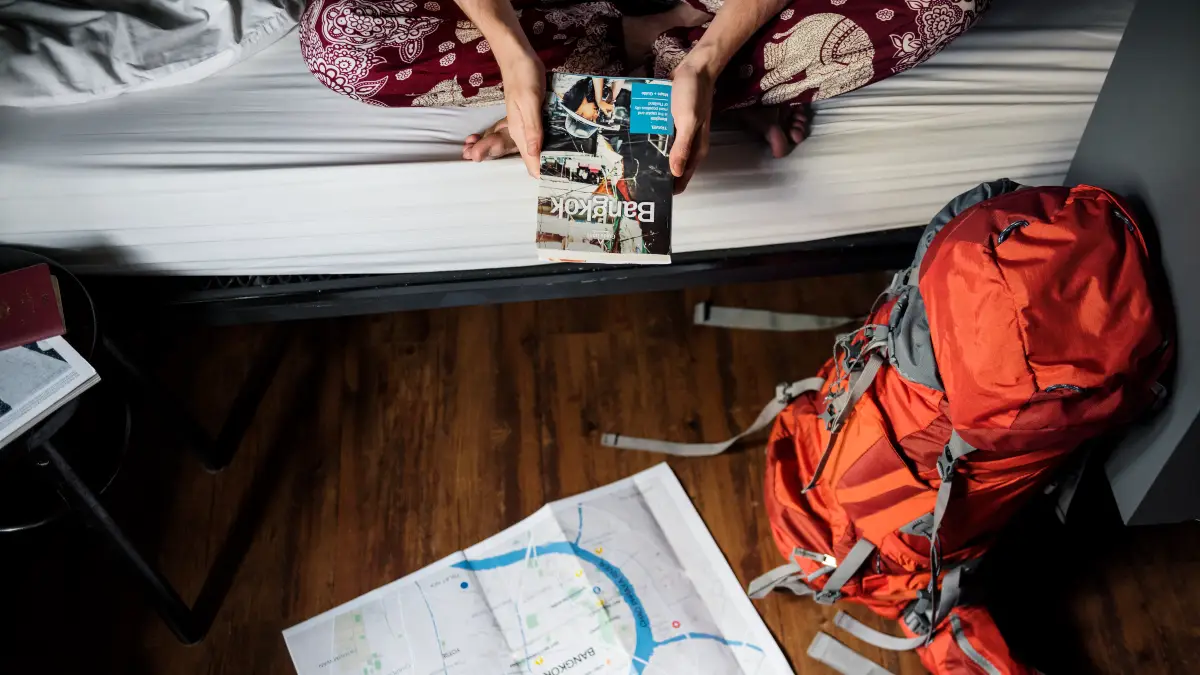
Your safety starts before you even pack your bags. Proper planning can prevent problems that could ruin your business trip. Surprisingly, only 22% of business travelers report being briefed on emergency contacts. This gap puts you at risk.
Research Your Destination’s Specific Risks
Start your business travel planning by researching your destination’s safety profile. Check travel advisories from the State Department (travel.state.gov) for crime rates, political stability, and health concerns.
Look up local scams that target business travelers. Learn basic cultural norms about dress codes, greetings, and behaviors that might attract unwanted attention.
Create a Detailed Itinerary with Check-in Plans
Share your full travel schedule with a trusted colleague and family member. Include flight numbers, hotel addresses, meeting locations, and local contact information.
Set up regular check-in times via text or call. If you miss a check-in, your contacts should know exactly what steps to take.
Register with STEP for International Travel
The Smart Traveler Enrollment Program (STEP) is a free service that takes just 20 minutes to complete but can be critical during emergencies. When you register at step.state.gov, the nearest U.S. Embassy or Consulate can:
- Contact you during emergencies
- Help family reach you
- Send real-time safety alerts about your location
- Assist with lost passports or medical emergencies
Prepare Essential Documents and Digital Backups
Make two copies of your passport, driver’s license, credit cards, and travel insurance details. Keep one set with you (separate from originals) and leave another with a trusted person at home.
Store digital copies in an encrypted, password-protected cloud service you can access from anywhere. Add emergency contacts to your phone under “ICE” (In Case of Emergency).
Pack Security Essentials for Solo Travelers
Your work travel preparation should include these safety items:
- Door wedge alarm ($15-20)
- Portable door lock
- Small flashlight or headlamp
- Power bank for phone emergencies
- RFID-blocking wallet
- Dummy wallet with expired cards for potential theft situations
- First aid basics
A proper travel risk assessment takes time but builds a solid foundation for safety. The hour you spend preparing could save you days of trouble abroad.
2. Accommodation Security: Choosing and Securing Your Temporary Home
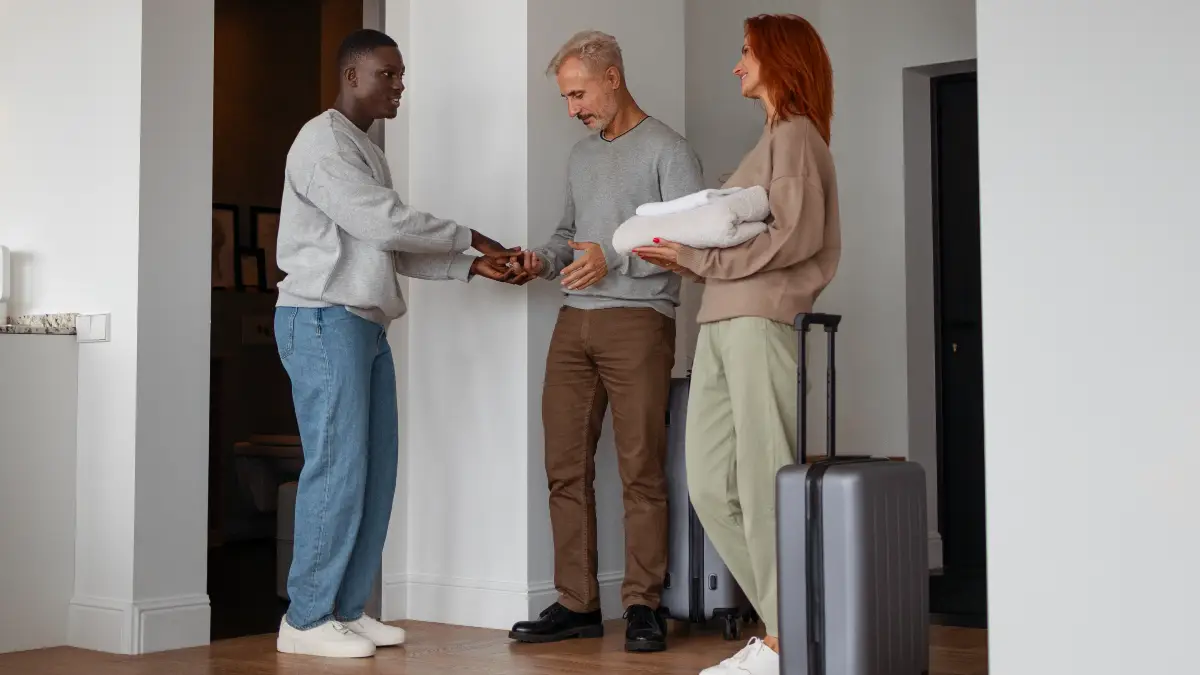
Your hotel room becomes your sanctuary during business travel. Yet 83% of female business travelers report safety incidents in accommodations. These hotel safety tips can dramatically reduce your risks.
Select Hotels with These Safety Features
The right hotel choice forms your first defense. Look for these secure accommodations for business travel:
- 24-hour front desk staffing
- Electronic key card systems (not traditional keys)
- Security cameras in lobbies, elevators, and hallways
- Well-lit entrances, parking areas, and hallways
- Interior room access (not outdoor corridors)
- Location in business districts or safer neighborhoods
Many corporate travel policies allow booking slightly more expensive hotels if they offer better security features. Always check recent reviews that mention safety concerns.
Choose the Optimal Room Location
Request a room between floors 3 and 6. This height makes rooms harder to break into from outside but still accessible by fire truck ladders in emergencies. Avoid rooms near stairwells, elevators, or ice machines which get more foot traffic.
Corner rooms typically have fewer neighboring rooms, reducing potential disturbances.
Follow Room Security Protocols on Arrival
When you first enter your room:
- Keep the door propped open with your luggage while you check the room
- Check closets, under beds, and behind shower curtains
- Verify the phone works by calling the front desk
- Test all locks on doors and windows
- Identify fire escape routes
Once settled, use a door wedge alarm ($15-$20) under your door. These simple devices prevent door opening and sound a loud alarm if someone tries to enter. For extra protection, add a portable door lock that prevents entry even with a working key card.
Secure Your Valuables and Documents
Never leave valuables visible in your room. Use the hotel safe for your passport, extra credit cards, and valuable electronics when you leave.
If you don’t trust the in-room safe, ask about the hotel’s main safe. For essential documents you carry, use RFID-blocking sleeves to prevent digital theft.
Know Your Emergency Exit Plan
As soon as you check in, locate the nearest emergency exits on your floor. Count the doors between your room and the exit so you can find your way in darkness or smoke.
Keep your room key, phone, and flashlight in the same place each night so you can grab them quickly in an emergency. Business hotel security might seem excessive, but these small habits create layers of protection that work together to keep you safe.
3. Transportation Safety: Navigating Unfamiliar Territory
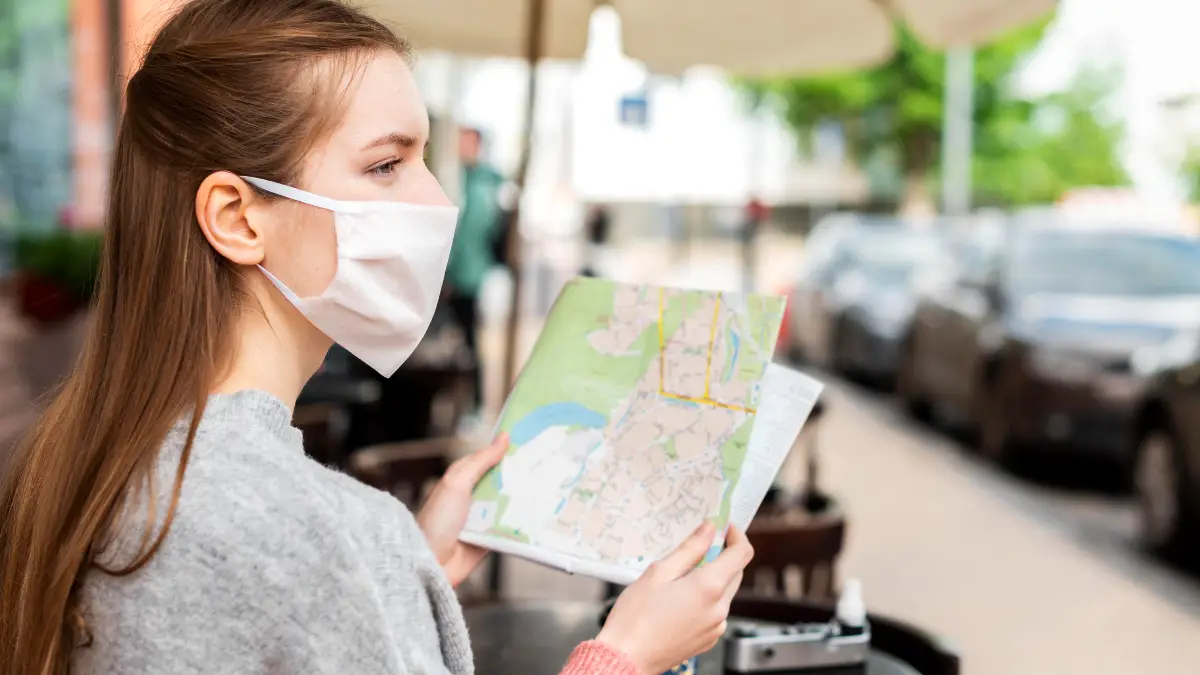
Getting around safely in a new city presents unique challenges. Business travel transportation safety matters more now than ever, with rideshare usage increasing 61% among business travelers since 2021.
Verify Rideshare Drivers Properly
Rideshare services offer convenience and tracking, but require careful verification:
- Wait indoors until your app shows the driver has arrived
- Confirm the license plate matches your app before approaching
- Ask “Who are you here for?” instead of offering your name first
- Check that the driver matches their profile photo
- Sit in the back seat, preferably behind the passenger seat for best visibility and exit options
- Share your trip status with a colleague or friend through the app
Always trust your instincts. If something feels wrong, cancel the ride and request another, even if you can’t explain why you feel uncomfortable.
Navigate Public Transportation Safely
While 50% of travel managers rate ground transportation as safest, public transit requires specific precautions. Research transit systems before your trip, focusing on which lines and stations to avoid, especially at night.
Store your transit pass separately from your wallet to avoid revealing cash when paying for rides. Sit near the driver on buses or in cars with multiple passengers on trains.
Keep your phone and valuable items out of sight – the quick grab of a phone from a distracted traveler is among the most common transit crimes. Avoid wearing expensive watches or jewelry that mark you as a target.
Recognize Taxi Safety Red Flags
Use only licensed taxis from designated stands or those called by your hotel. Legitimate taxis should:
- Display proper licensing
- Have a working meter
- Show the driver’s ID visibly
- Quote rates consistent with posted prices
- Have standard company markings
Before entering, note the taxi number and license plate by texting it to yourself or a colleague. When possible, sit in the back seat and keep your bags with you rather than in the trunk if you’re making multiple stops.
Secure Rental Cars and Navigation
If you rent a car, these safe rideshare practices still apply:
- Inspect the vehicle before accepting it
- Familiarize yourself with controls before leaving the lot
- Use GPS but bring printed directions as backup
- Keep doors locked while driving
- Park in well-lit, busy areas
- Never leave valuables visible in the car
Program your destinations before starting to drive, not while moving. If you get lost, find a public place like a restaurant or gas station to reorient yourself rather than stopping on a random street.
Walking Safety Strategies for Different Areas
When walking in business districts:
- Maintain confident body language
- Stay on main, well-lit streets
- Avoid showing expensive devices or jewelry
- Carry bags on the building side of your body, away from the street
- Use crosswalks and follow traffic signals
In unfamiliar areas, use extra caution after dark. Consider using a destination’s “send a car” service rather than walking if you’re uncertain about an area’s safety.
The rental car security practices you follow should extend to your personal awareness at all times. Business travelers who plan transportation in advance face fewer risks and can focus on what really matters – their work.
4. Digital Security for the Modern Business Traveler
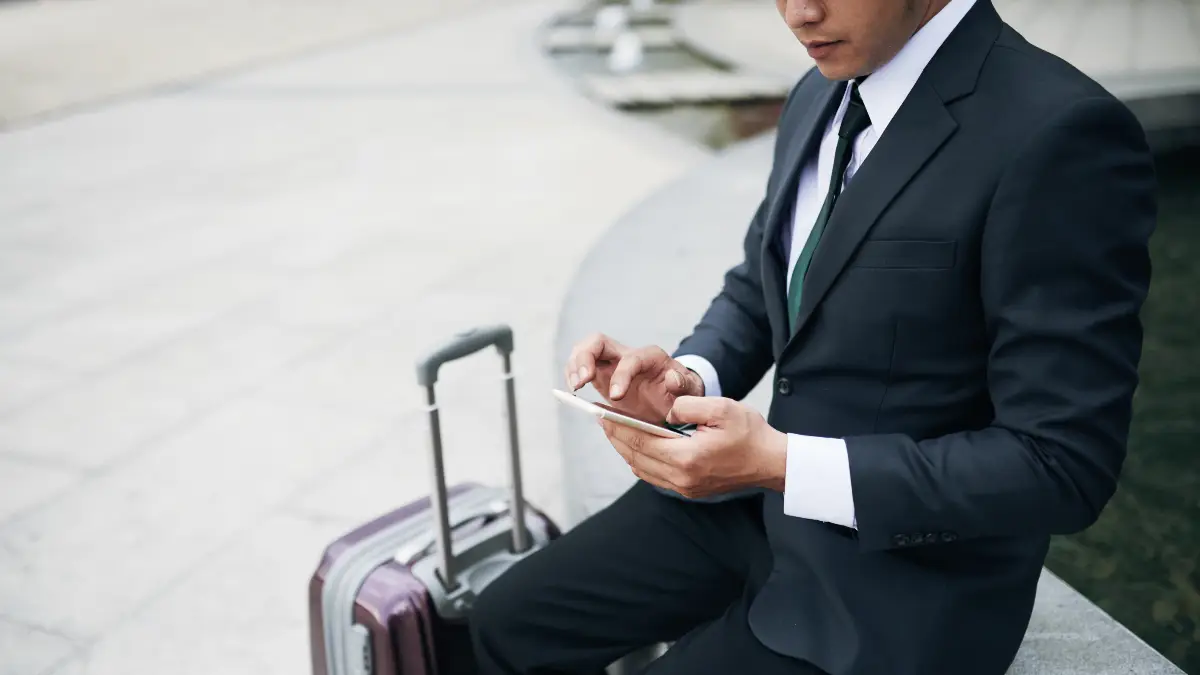
Your physical safety gets attention, but what about your digital safety? Public WiFi networks put your business data at serious risk. With GPS spoofing incidents increasing 500% in 2024, business travel cybersecurity deserves your full attention.
Protect Yourself on Public WiFi
Public WiFi networks in hotels, airports, and coffee shops are convenient but dangerous.
Hackers can easily intercept data, including passwords and credit card details. Using a Virtual Private Network (VPN) reduces WiFi hacking risk by 96% by creating an encrypted connection.
Before you travel:
- Install a reliable VPN on all devices
- Set it to connect automatically
- Test it before your trip
- Verify your company’s VPN policy
Even with a VPN, avoid accessing financial accounts or highly sensitive information on public networks. Use your phone’s hotspot for banking or confidential work whenever possible.
Secure Your Devices Before and During Travel
Take these steps for digital safety while traveling:
- Update all software and security patches
- Enable two-factor authentication on important accounts
- Use strong, unique passwords for each important account
- Turn off Bluetooth and WiFi when not in use
- Set devices to require passwords/biometrics after short idle periods
- Install tracking software that can remotely wipe devices if stolen
Never leave laptops or tablets unattended in public places, even for “just a minute.” A professional thief needs seconds to steal your device or install monitoring software.
Use Encryption and Secure Communication Tools
Protect sensitive business data with these secure business communications practices:
- Encrypt your laptop’s hard drive (built into Windows and Mac OS)
- Use Signal or WhatsApp for messages requiring privacy
- Password-protect any sensitive documents
- Avoid discussing confidential business in public places
- Consider a privacy screen that prevents others from viewing your screen
For maximum security, some companies provide “travel phones” and laptops with minimal data that can be wiped clean after the trip.
Handle Business Documents Securely
Physical documents need protection too:
- Minimize what you carry – bring only what you absolutely need
- Keep documents in secure, RFID-blocking portfolios
- Never leave sensitive papers in hotel rooms
- Use hotel business centers cautiously – they often have minimal security
- Shred or securely dispose of all business papers before departure
Consider using secure cloud storage instead of paper when possible, but ensure your access methods are secure.
Use Location Sharing Wisely
Location sharing helps others find you in emergencies but creates risks if overused:
- Share your location with trusted colleagues during the trip
- Use your company’s travel tracking system if available
- Consider time-limited location sharing rather than continuous tracking
- Disable location tags on social media posts
- Wait until you’ve left a location before posting about being there
The digital safety habits you build during business travel protect both you and your company’s information. Most data breaches happen because of simple mistakes that are easy to avoid with proper planning.
5. Health and Emergency Preparedness
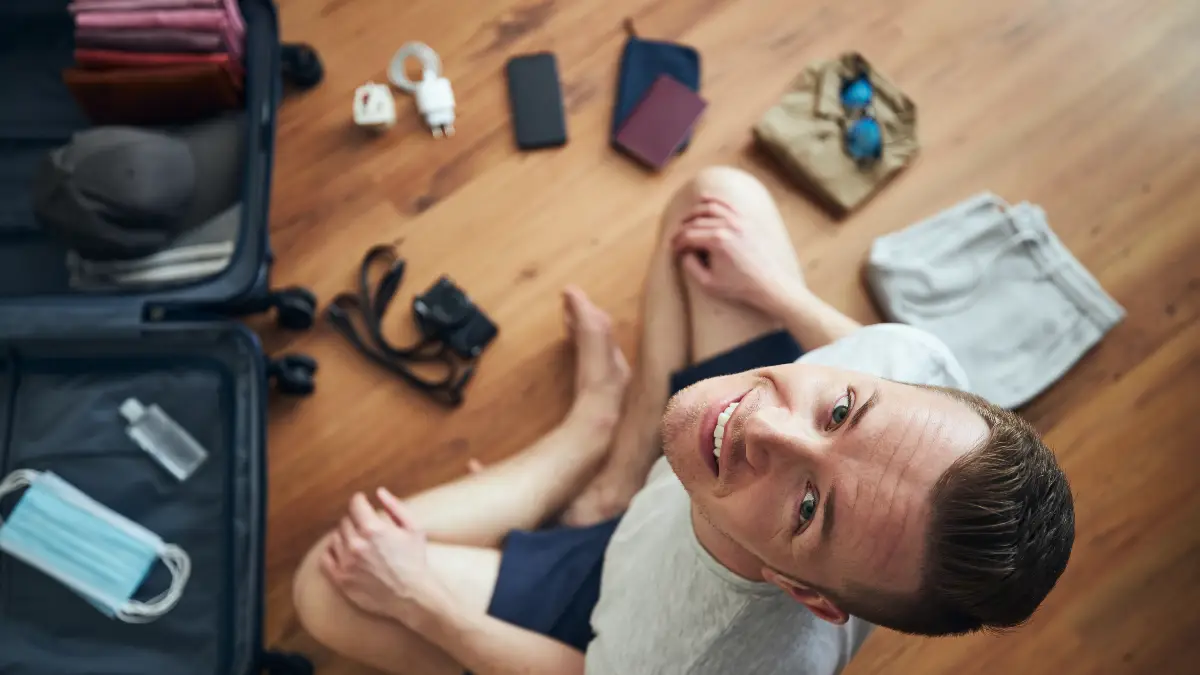
A health crisis abroad can turn catastrophic fast. Medical evacuations cost between $25,000-$250,000, yet many business travelers lack proper coverage. This simple guide helps protect your health and wallet.
Get Proper Travel Health Insurance
Basic travel insurance isn’t enough for business travel emergency preparedness. Your policy should include:
- Primary (not secondary) medical coverage of at least $100,000
- Coverage for pre-existing conditions
- Trip interruption benefits
- Coverage in all countries you’re visiting
- 24/7 emergency assistance hotline
Company insurance often has gaps. Check your coverage before every trip and buy supplemental insurance if needed. Many credit cards offer some travel protection, but rarely enough for serious emergencies.
Secure Medical Evacuation Coverage
Medical evacuation coverage is critical but often overlooked. This benefit pays to transport you to adequate medical facilities if local care isn’t sufficient. For international business travel, get:
- Minimum $250,000 evacuation coverage
- Coverage that allows you to choose your hospital destination
- Policies that cover the full cost, not just “to the nearest adequate facility”
- Coverage with direct payment to providers (not reimbursement)
Your regular health insurance, Medicare, and Medicaid typically provide zero coverage for international evacuations.
Pack a Smart Medical Kit
Create a travel medical kit with:
- Prescription medications (in original bottles) plus a 3-day extra supply
- Copy of prescriptions using generic drug names
- Basic pain relievers
- Stomach medications
- Band-Aids and antibiotic ointment
- Any medical devices you use (with extra batteries)
Store medications in carry-on luggage, never checked bags.
Create Emergency Contact Plans
Before departure:
- Program local emergency numbers in your phone
- Save your insurance company’s 24/7 assistance number
- Add embassy/consulate contacts
- Create an ICE (In Case of Emergency) contact in your phone
- Share your itinerary and insurance details with family
Consider apps like TripWhistle Global SOS that provide local emergency numbers worldwide.
Manage Travel Fatigue
With 45% of international business travelers reporting increased stress during trips, fatigue management matters. To reduce jet lag:
- Adjust to your destination time zone a few days before travel
- Stay hydrated before, during, and after flights
- Avoid alcohol on flights
- Get natural sunlight at your destination
- Schedule important meetings for your body’s natural peak times
Even the best-prepared travelers can face emergencies. Having the right insurance and plans turns potential disasters into manageable situations.
6. Special Considerations for Different Traveler Demographics
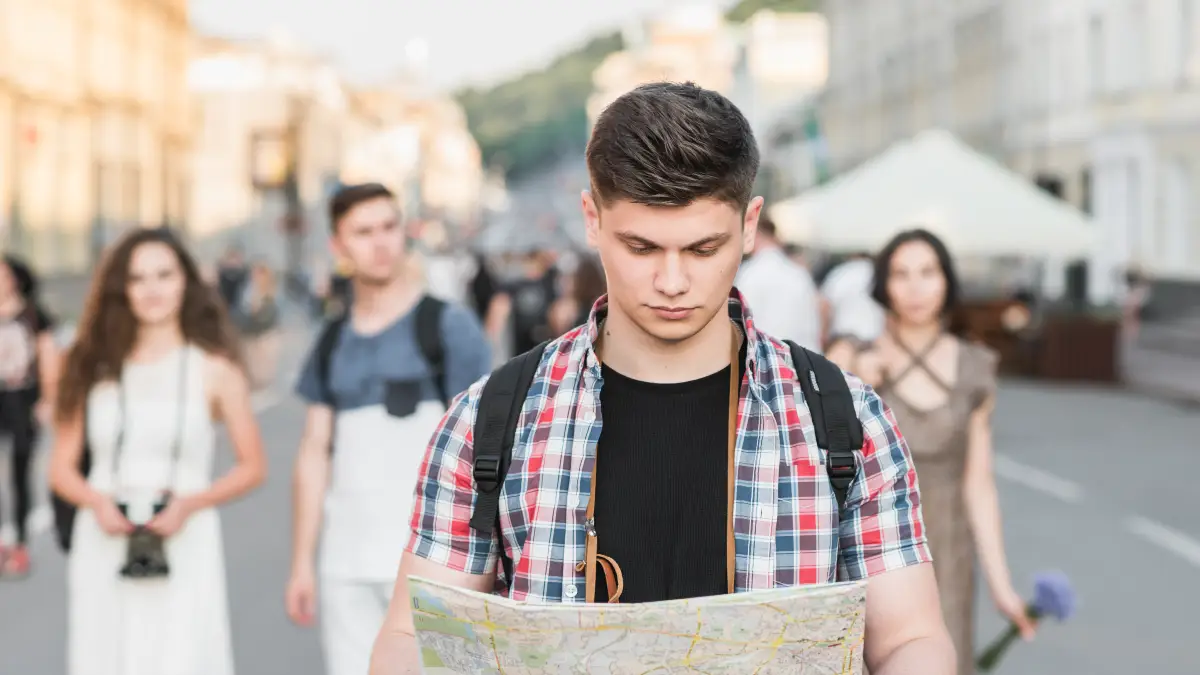
Not all business travelers face the same risks. Your personal background and identity can create unique safety concerns that require special attention.
Female Business Traveler Safety Strategies
71% of women believe they face greater risks than male business travelers. To enhance female business traveler safety:
- Book hotels with interior corridors and 24-hour front desk staff
- Request rooms near elevators but not on the ground floor
- Use valet parking when available, especially at night
- Check in using first initial instead of full first name
- Bring a door wedge alarm for extra room security
Many hotels now offer female-only floors with enhanced security and female staff. Apps like GeoSure provide safety scores specific to women travelers for neighborhoods worldwide.
LGBTQ+ Travel Considerations for International Business
More than 70 countries criminalize same-sex relationships, creating serious risks for LGBTQ+ business travelers. Before traveling:
- Research local laws and cultural attitudes at your destination
- Review your company’s emergency extraction policies
- Consider joining the International LGBTQ+ Travel Association for resources
- Know the location of LGBTQ+-friendly businesses at your destination
- Adjust public behavior based on local norms for safety
LGBTQ+ business travel security may require extra caution in certain countries. The U.S. State Department website provides country-specific information for LGBTQ+ travelers.
Cultural Intelligence for Different Regions
Cultural awareness for business travelers prevents uncomfortable and potentially dangerous situations:
- Learn basic greeting customs and taboos
- Understand dress code expectations, especially for women
- Know tipping practices to avoid offense or unwanted attention
- Research acceptable public behavior
- Learn a few basic phrases in the local language
What’s normal at home might attract negative attention abroad. In the Middle East, maintaining conservative dress is important, while in Latin America, refusing offered food might cause offense.
Solo Dining and Social Safety
Eating alone makes many business travelers feel vulnerable. Stay safer by:
- Choosing hotel restaurants or well-reviewed places near your hotel
- Sitting at the bar or counter instead of isolated tables
- Bringing reading material to stay occupied
- Limiting alcohol consumption
- Using room service when uncomfortable with local options
Let someone know where you’re dining and when you expect to return.
Industry-Specific Safety Considerations
Your industry creates unique risks:
- Healthcare workers should avoid discussing patient data in public
- Financial professionals should be cautious about revealing client information
- Technology employees should protect devices containing proprietary information
- Pharmaceutical reps should secure product samples
- Jewelry and luxury goods sellers should use extra caution with samples
The more valuable your business information or products, the more attention your safety needs.
7. Technology and Tools for Enhanced Travel Safety
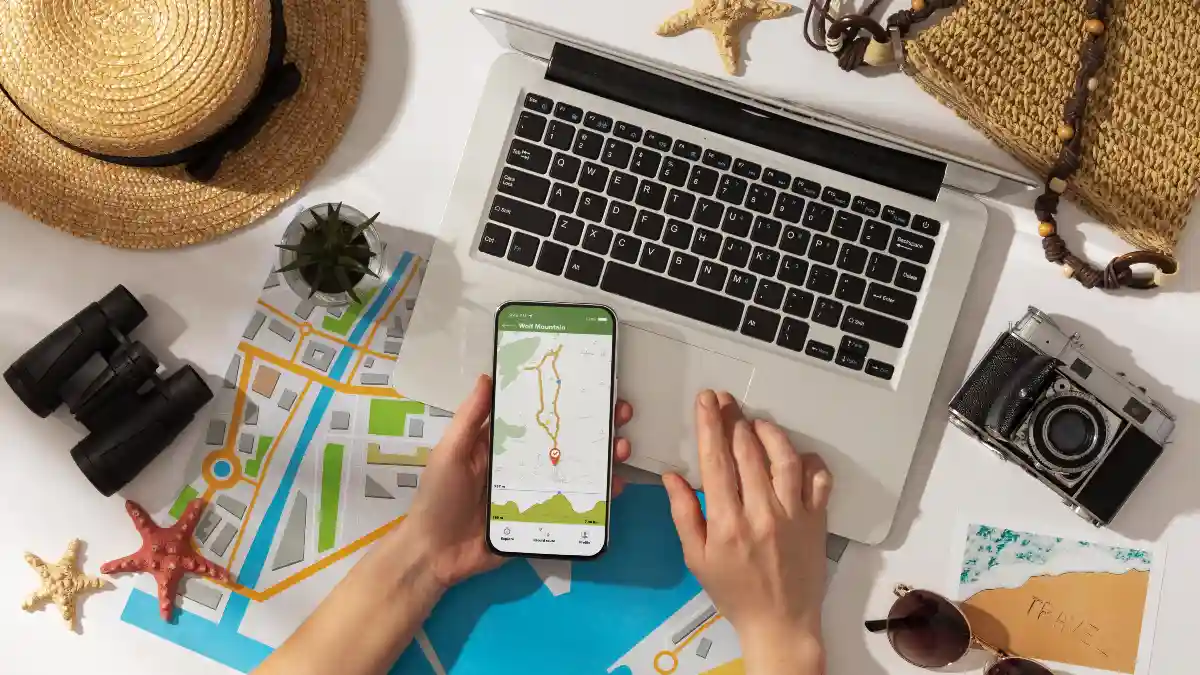
Technology has transformed travel safety. Smart tools now help you stay secure and connected in ways that weren’t possible just a few years ago.
Must-Have Safety Apps for Business Travel
These business travel safety apps provide peace of mind:
- TripWhistle: Provides emergency numbers worldwide
- GeoSure: Offers safety scores for neighborhoods globally
- Smart Traveler: Official State Department information and alerts
- Find My Friends/Life360: Location sharing with trusted contacts
- What3Words: Pinpoints your exact location with three words for emergency services
Over 25 million Americans now use personal safety apps. The best apps work offline and use minimal battery power.
Smart Luggage and Tracking Technologies
The smart luggage tracking market is growing 15% annually for good reason:
- GPS-enabled suitcases let you track your bag’s location in real-time
- Smart tags alert you if you leave items behind
- Bluetooth trackers like Tile and Apple AirTags help locate lost bags
- Digital luggage scales prevent overweight baggage surprises
- TSA-approved smart locks allow remote locking/unlocking
These technologies reduce stress and save time when luggage goes missing. Some premium luggage brands now include tracking as standard features.
Personal Safety Devices and Wearable Tech
Beyond your phone, consider these travel safety technology options:
- Personal alarms that emit loud sounds when activated
- Wearable panic buttons disguised as jewelry
- Smart watches with fall detection and emergency calling
- UV sanitizers for hotel surfaces and water purification
- Portable door locks that add security to any room
Many personal safety devices are small enough to fit in a pocket or wear as accessories, making them practical for business travel.
AI-Powered Risk Assessment Tools
Companies now use artificial intelligence to keep travelers safe:
- Platforms that monitor global risks and send real-time alerts
- Trip risk evaluation based on destination, traveler profile, and current events
- Automated check-in systems that flag missed check-ins
- Weather and natural disaster prediction for your route
- Health risk mapping for disease outbreaks
Ask if your company provides access to these tools. If not, apps like Sitata offer similar features for individual travelers.
Secure Communication Platforms
Keep in touch safely using:
- Signal: End-to-end encrypted messaging
- WhatsApp Business: Secure messaging with verification features
- Wickr: Self-destructing messages for sensitive communications
- Telegram: Secret chats with disappearing messages
- ProtonMail: Encrypted email for confidential business communication
These platforms help you communicate with home and office without exposing sensitive information.
Technology won’t replace good judgment, but it adds valuable layers of protection to your travel safety plan. The right tools help you focus on your work instead of worrying about safety.


